Dambusters' dog grave move harmful to heritage, group warns
- Published
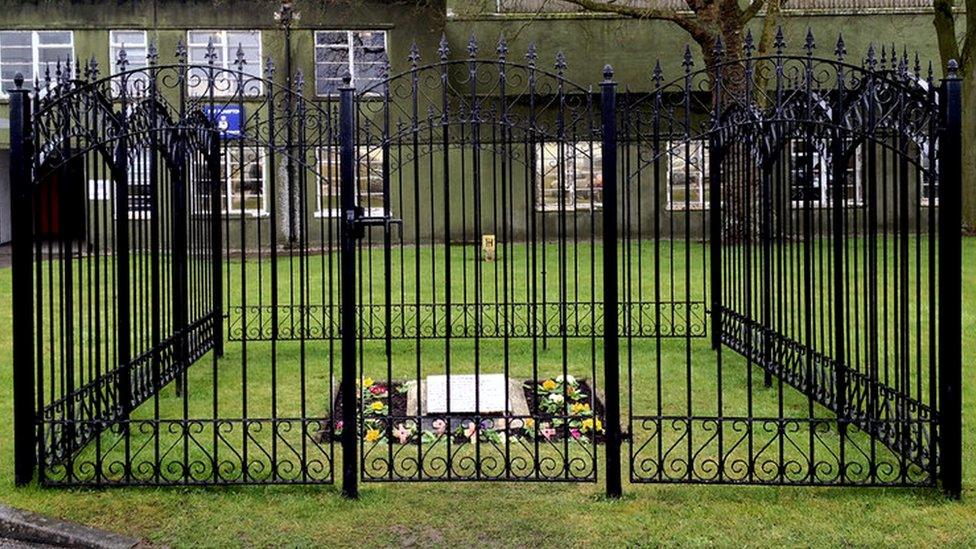
The dog's grave is currently located at the former home of the Dambusters squadron at what was RAF Scampton
Historic England has said plans to move a grave honouring the Dambusters' dog would cause harm to the "heritage significance" of RAF Scampton.
The 617 Squadron's mascot, a Labrador, died on the day of the famous "bouncing bomb" raid on German dams in 1943.
Plans to move the grave from the former RAF base in Lincolnshire to the squadron's current base in Norfolk have attracted hundreds of objections.
A public consultation on the proposals is currently under way.
The RAF's application to move the grave has been made due to uncertainty over the future of the Scampton site, amid government plans to convert it into a migrant camp.
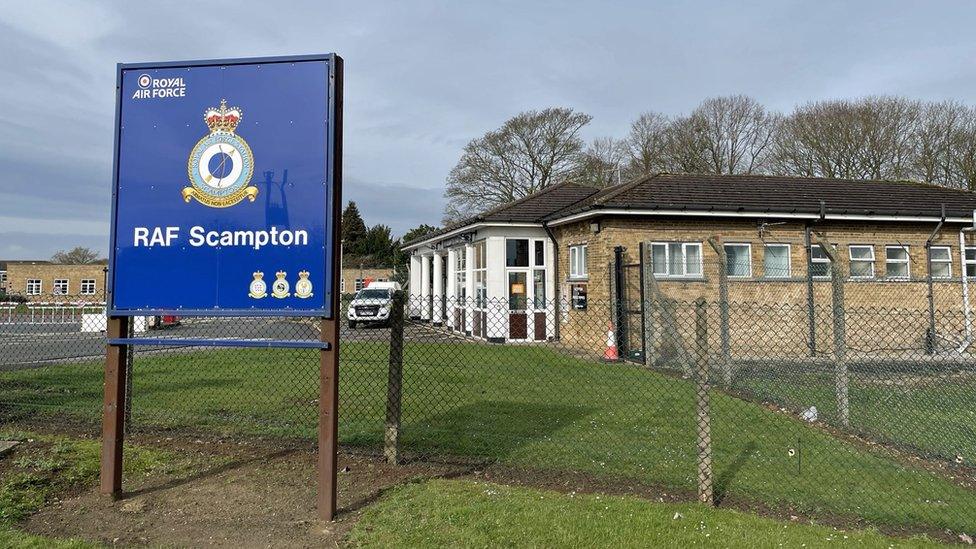
Up to 2,000 asylum seekers could live at the site in Lincolnshire, the government said
In 1943, Squadron Wing Commander Guy Gibson used his dog's name, which is a racial slur, as a code word to confirm which German dams had been breached during the famous World War Two raids.
The black Labrador retriever died the same night after being hit by a car, but his death was kept from the airmen as it was feared they might see it as a bad omen.
The pet was buried outside Hangar Two, a Grade II listed building which was home to the squadron and Guy Gibson's office.
In a letter to West Lindsey District Council, Historic England said the dog played "an important role as a squadron mascot" and that the grave was "significant as part of the story of Scampton, Bomber Command, 617 Squadron, Guy Gibson and the Dambusters raid".
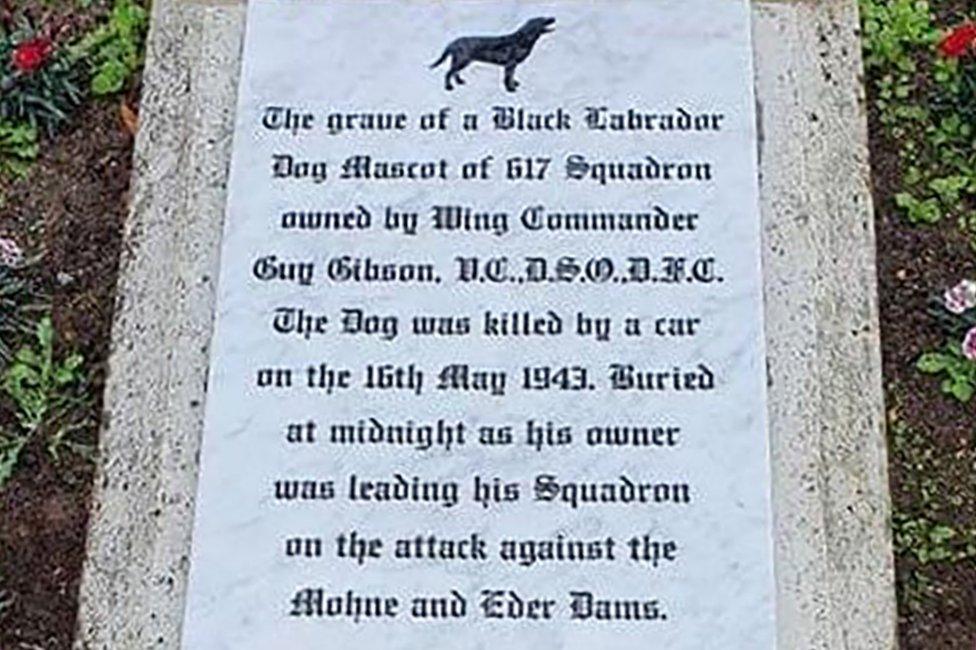
The black Labrador's name was the code word to confirm the dams had been breached
The letter continued: "The removal of the grave and dog's remains would cause some harm to the significance of the Grade II listed hangars through removal of an element which is part of the history of the hangars and their important role in World War Two, and a part of the history of the airfield as a whole."
Charity Airfields of Britain Conservation Trust has also opposed the plans, describing digging up the dog's grave as "abhorrent".
Kenneth Bannerman, from the trust, said: "It would cause the most catastrophic damage on so many levels to Scampton airfield, the surrounding community, Lincolnshire and everything to do with 617 Squadron and the Dambusters."
It is believed that the first group of 200 asylum seekers to be moved into temporary accommodation at Scampton will arrive in mid-August.
A petition against the government's plans has now reached 70,000 signatures.
Local council leaders have applied for a judicial review into the move, fearing it would affect plans for a £300m regeneration project at the site.

Follow BBC East Yorkshire and Lincolnshire on Facebook, external, Twitter, external, and Instagram, external. Send your story ideas to yorkslincs.news@bbc.co.uk, external.
Related topics
- Published24 May 2023
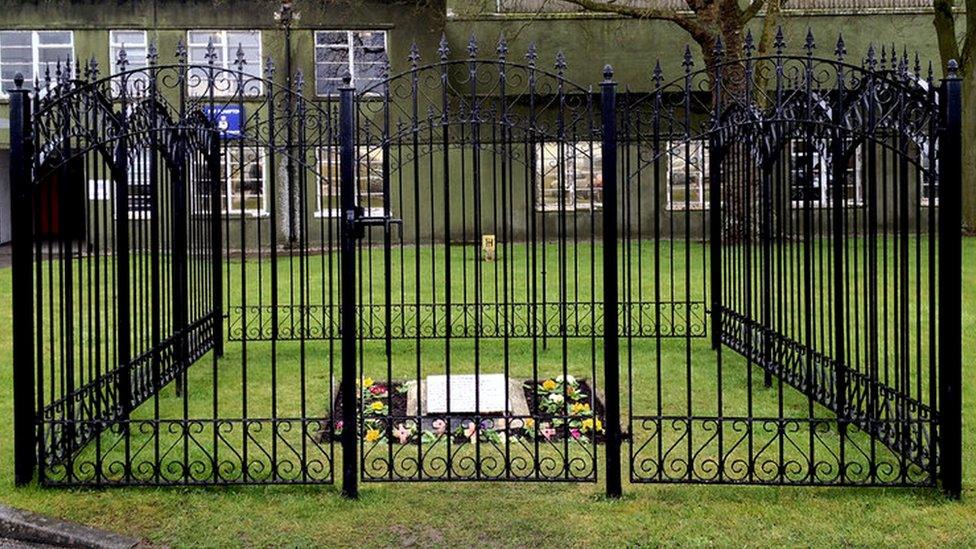
- Published17 May 2023
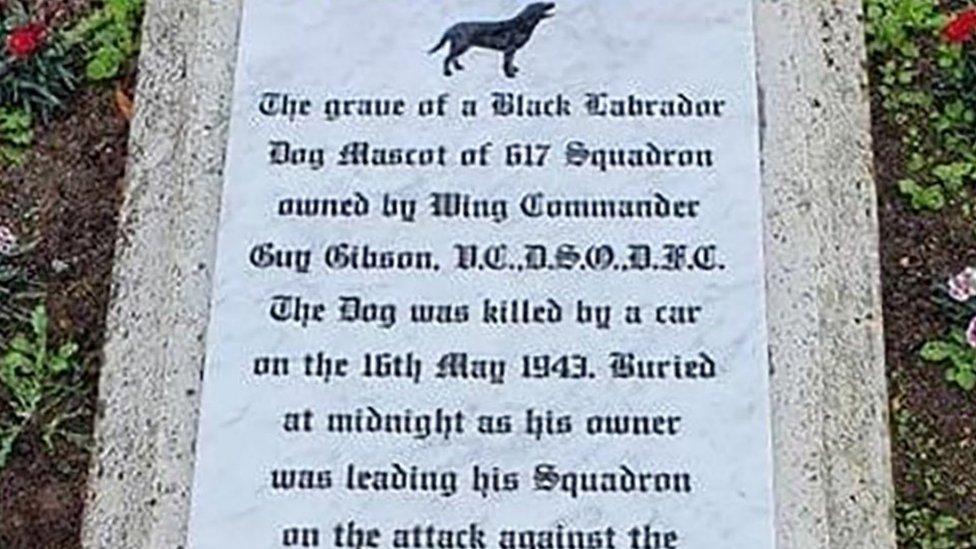
- Published11 May 2023
